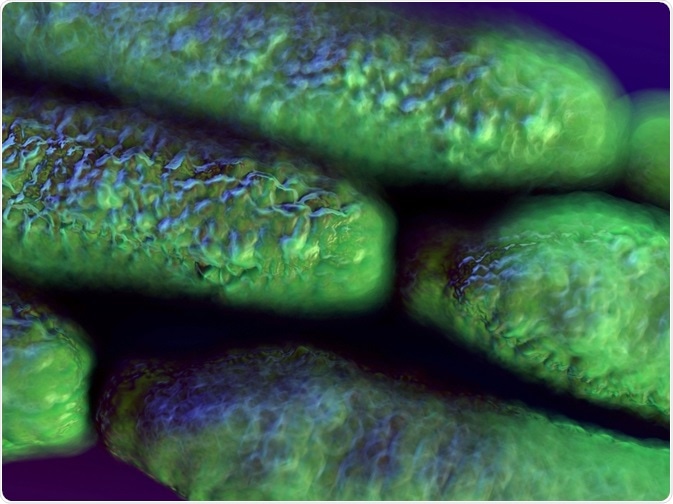Microbial forensics is a subfield of forensics that involves the application of scientific techniques to characterize microbial evidence related to an act of bioterrorism, biocrime or the accidental release of a microbial agent or toxin.
Skip to:
 royaltystockphoto | Shutterstock
royaltystockphoto | Shutterstock
What is microbial forensics?
Microbial forensics seeks to provide robust results that enable reliable conclusions to be drawn quickly to help protect public health. Effective analysis requires validation across all aspects of forensic investigations including the collection of evidence, the handling and preservation of samples, the extraction of microbial targets, evidence analysis, and the interpretation of results.
Tools used in this field include both genetic and non-genetic based assays. Over recent decades, advances in technologies such as massive parallel sequencing, atomic force microscopy, mass spectrometry and bioinformatics now enable high-level microbial characterization for various applications including the identification of perpetrator(s), body fluid assessment, and the tracking of infectious agents.
The roots of microbial forensics are well established since they have been used in the investigation of disease outbreaks in epidemiology and public health studies for many decades. The fields of epidemiology and microbial forensics are generally used in combination: epidemiologists focus on the causative agent, the outbreak, disease spread, potential reservoirs of infection, and at-risk populations, while forensic experts focus on the characterization of the microbial agent or toxin and how it was produced or spread.
Massive Parallel Sequencing (MPS)
More than 1,400 species or strains of microbe potentially pose a health threat to humans, with this number exponentially expanding when plant and animal microbes are taken into consideration. The advent of MPS, also referred to as next-generation or high-throughput sequencing offers substantially increased speed and throughput compared with previous techniques.
When combined with powerful bioinformatics techniques, MPS can identify any microbe and can even be used to characterize genetically engineered pathogens. The technique saves time and reduces costs by enabling rapid diagnosis and a culture-free way of monitoring infection, as well as providing real-time monitoring of outbreaks.
MPS can also be used in microbiome studies to investigate health and disease states and the effects of illnesses such as inflammatory bowel disorders, antibiotic-induced problems, and cancer. Such tools are also used to characterize the human microbiome as an application in forensics for human identification, the characterization of bodily fluids, and the analysis of time-since-death composition.
Traditional human DNA testing
Human microbiome analysis can be used in combination with traditional human DNA analysis techniques such as short-tandem-repeat sequencing and single nucleotide polymorphism analysis to provide more robust results in cases where people are suspected of having been involved with bioterrorism or biocrime.
Human identification using DNA-based methods provides analysis of stable, inherited biomarkers that are related to an individual’s ancestry and phenotype, for example. Forensic testing of the microbiome, on the other hand, enables assessment of both stable markers and fluctuating changes such as those related to diet, health, and recent location that the microbes have adapted to.
Challenges in microbial forensics
Despite the advances in microbial forensics, a 2014 report regarding the tools and methods used in microbial forensics, issued by the National Research Council, prioritized areas that require improvement for more effective identification of the source and preparation for global biological outbreaks.
One such set of requirements identified concerns the substantial technological challenges faced in obtaining sufficient information about many microorganisms, and the development of more reliable techniques for distinguishing between intentional, accidental, and natural microbial outbreaks.
The report authors advise that efforts aimed to improve the identification, characterization, and tracking of microbes should begin with known microbes, and then progress to related and new or emerging microbes. According to the report, this would require the systematic establishment of comprehensive collections of microbial forensic reference data, that individuals in the scientific and policy-making arenas can explore ways to share.
Another priority area identified was the need to leverage current initiatives, particularly efforts that are being made in the fields of both microbial forensics and public health. Examples include studies into pathogenicity and immune system responses, attempts to improve worldwide accessibility to molecular diagnostic methods, and efforts to fine-tune the bioinformatics and statistical techniques used to assess evidence.
A third set of requirements is concerned with shortening the time taken to progress from initiation of a production process to completion of the final product, and harnessing current markets that would serve as incentives for industries to generate the products required. This would include creating more rapid, cost-effective, and robust sequencing methods, implementing technical training more widely, and compiling all information on protocols that are currently in place along with the details of their validation status.
Further Reading